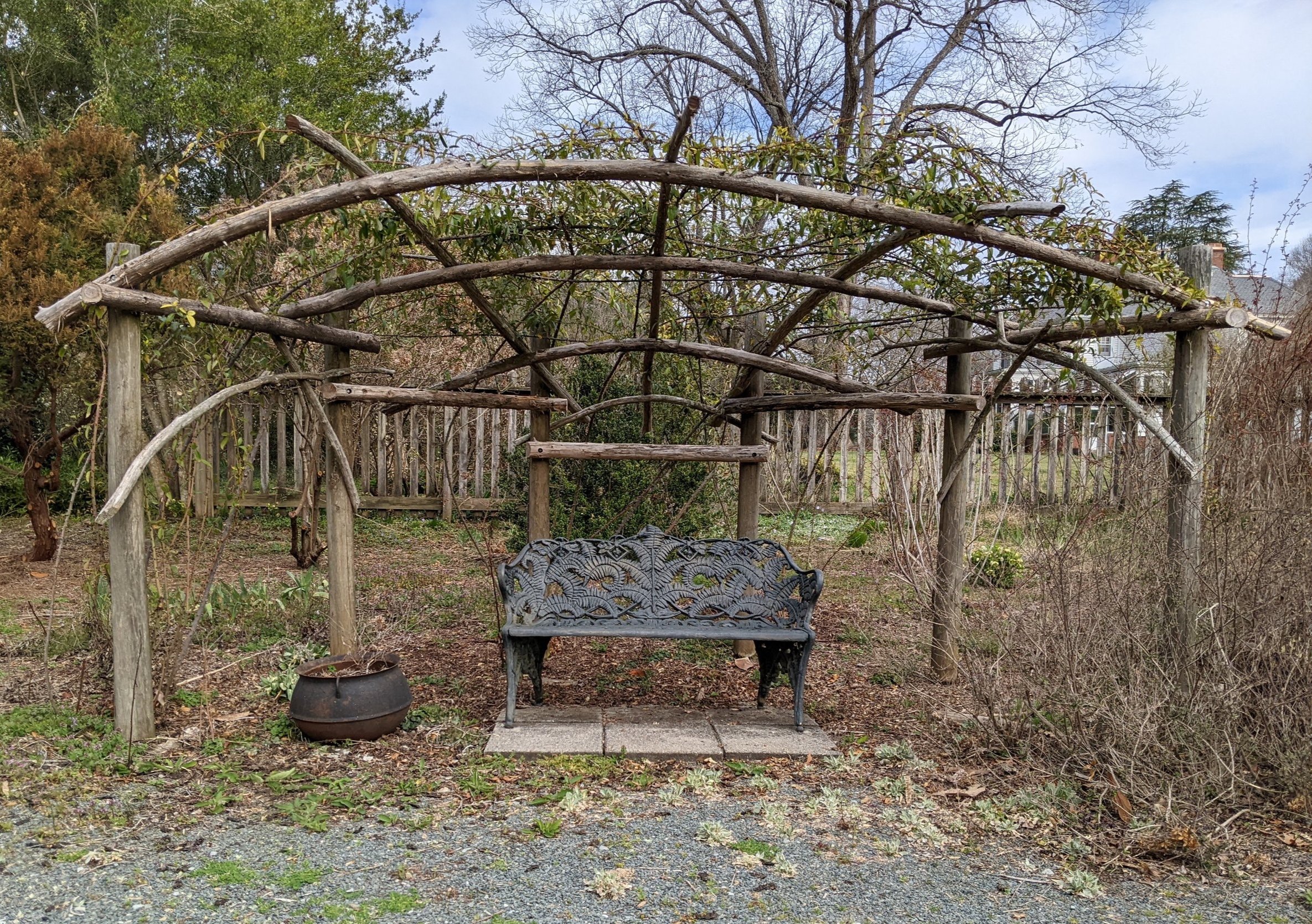Overgrowth
It takes four years to make a garden, or maybe forty, but probably four hundred or more. Many plants grow quickly, some of the best grow slow. In Shakespeare’s, Richard II, the gardener advises to “Cut off the heads of too-fast-growing sprays / That look too lofty in our commonwealth.” In the historical play, the gardener’s speech is understood metaphorically as instruction for the limiting of tyranny. But the meat of metaphors is in the natural world, and all gardeners, Shakespearean or otherwise, know that most plants require periodic curtailment.
February at Montrose is a time to even out the growth of some of our favorite plantings. All the roses must be pruned. The more modest, sweetly growing ones are tipped back and given a side-dressing of fertilizer to encourage their progress. The old climbers however, whose astounding blooms cover our arbors in May, must be reduced by half lest their monstrous growth overwhelm both their own beauty and their neighbors’.
This year we dedicated more time to restoring balance in the garden. Many lespedezas, which had taken over large areas, were removed outright. One chamaecyparis, originally planted for its unusual color and delicate leaf shape, had reverted to a larger, less interesting form. Over the years it had grown to a thirty-foot behemoth and encroached into the May garden, shading roses and paeonias with its vigor. After a drastic reduction of that tree, we went on to the barberries. Some we carefully trimmed, but others we cut to the ground to allow fresh growth to match the scale of their surroundings. Cornus sanguinea, the jewel of our bare, winter tropical garden, got the same treatment. We hope its blazing color will be refreshed by our lopping.
Herbaceous plants also need to be controlled. Perennially we dig out beautiful hellebores and epimediums where they’re not wanted. Now, after many years, we must even remove Cyclamen hederifolium when it crowds other cherished plants. Eranthis hyemalis, once lending its yellow February blooms to the purple crocuses in our amphitheater, now smothers slower and more delicate treasures. We dig it up tuber by tuber, careful to leave emerging trilliums and other bulbs in place. As the exhilarating growth of early spring begins, we must moderate the pace with our thoughts on future seasons.

